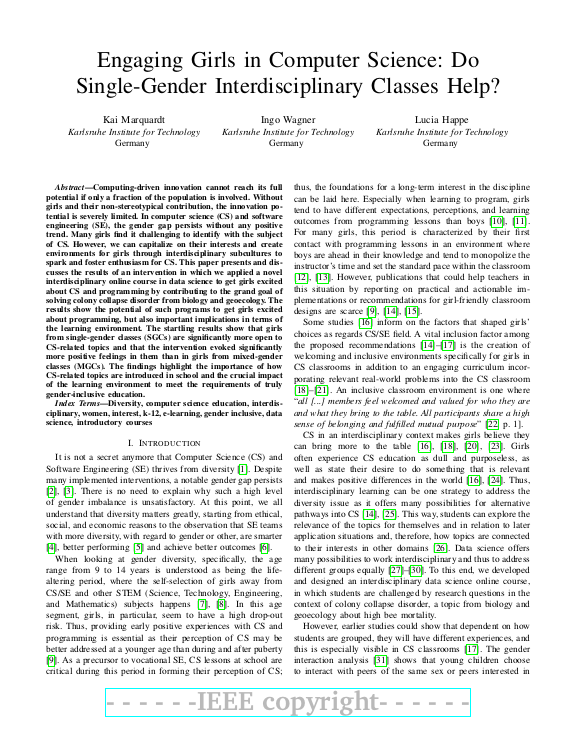Empowering Girls in Computer Science: Unleashing their Potential
In today’s rapidly advancing world, technology plays a pivotal role in shaping our lives. However, despite the ever-growing influence of technology, there’s a striking gender gap in the fields of computer science and software engineering. Girls remain significantly underrepresented in these domains, limiting the innovation and diversity that these industries thrive on. But what if there was a way to spark girls’ interest and enthusiasm for computer science from an early age?
The Gender Gap in Tech: The gender gap in computer science isn’t just a mere statistic; it’s a barrier that holds back the potential of half our population. Diversity is the driving force behind innovation, and when only a fraction of the population is involved in shaping the technological landscape, the true potential of computing-driven innovation remains untapped.
Challenging Stereotypes and Sparking Interest: Many girls find it challenging to connect with the subject of computer science. Traditional stereotypes and biases about technology being a “boys’ club” can hinder their interest and engagement. However, there’s hope on the horizon. Researchers around the world are actively exploring ways to make computer science more inclusive and appealing to girls.
An Interdisciplinary Approach: Enter the concept of interdisciplinary learning. Imagine a classroom where computer science isn’t just lines of code but a means to solve real-world problems. A recent study conducted by researchers from the Karlsruhe Institute for Technology in Germany sheds light on the potential of interdisciplinary learning in engaging girls in computer science. The study introduced an online course in data science that tackled the issue of colony collapse disorder, a problem in biology and geoecology.
The Results Are In: The study revealed some fascinating insights. Girls who participated in the single-gender classes showed significantly more openness to CS-related topics and exhibited more positive feelings compared to those in mixed-gender classes. This suggests that the learning environment and the context in which computer science is introduced can play a pivotal role in shaping girls’ perceptions and interest in the field.
Building a Gender-Inclusive Future: The implications of this study are significant. It highlights the importance of fostering a learning environment that encourages girls to explore the world of computer science without any preconceived notions or biases. By promoting interdisciplinary learning and showcasing the real-world impact of technology, we can bridge the gender gap and ensure that girls have an equal stake in shaping our technological future.
Linking the Future: If you’re intrigued by the potential of interdisciplinary learning in engaging girls in computer science, I invite you to delve deeper into the research conducted by Kai Marquardt, Ingo Wagner, and Lucia Happe from the Karlsruhe Institute for Technology in Germany. You can read their full paper titled “Engaging Girls in Computer Science: Do Single-Gender Interdisciplinary Classes Help?” to uncover the insights, findings, and implications that can help pave the way for a more inclusive tech landscape.
Conclusion: Empowering girls in computer science isn’t just about leveling the playing field; it’s about tapping into a wealth of untapped talent and diverse perspectives. By adopting innovative teaching approaches like interdisciplinary learning, we can ignite a passion for computer science that knows no gender bounds. Let’s work together to inspire the next generation of female tech leaders and create a future where everyone has a seat at the tech table.
In shaping this article, we found inspiration in the research paper ‘Engaging Girls in Computer Science: Do Single-Gender Interdisciplinary Classes Help?’ by Kai Marquardt, Ingo Wagner, and Lucia Happe. This study explores how interdisciplinary learning can ignite girls’ interest in computer science. To dive into the paper’s insights, just click the image on the right.
